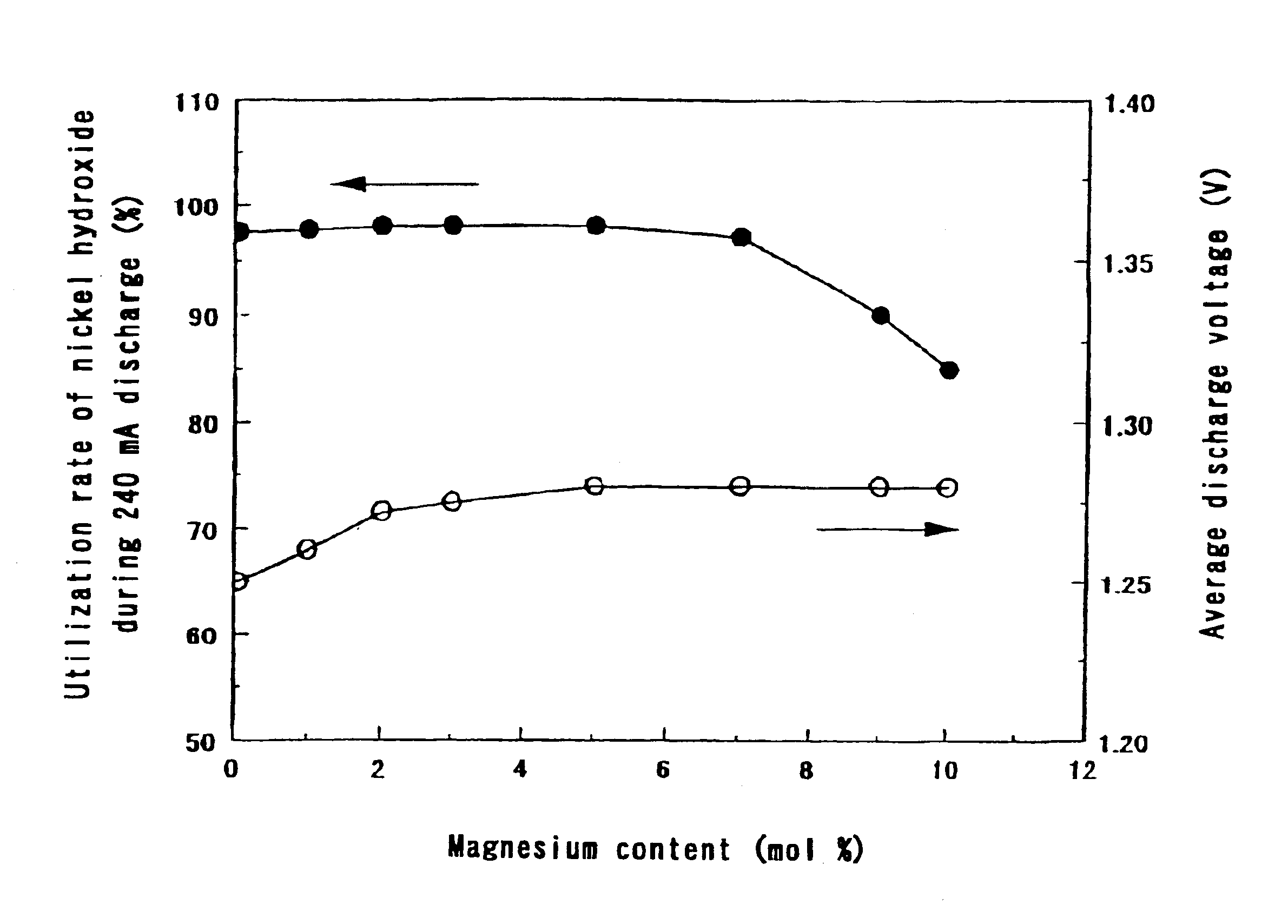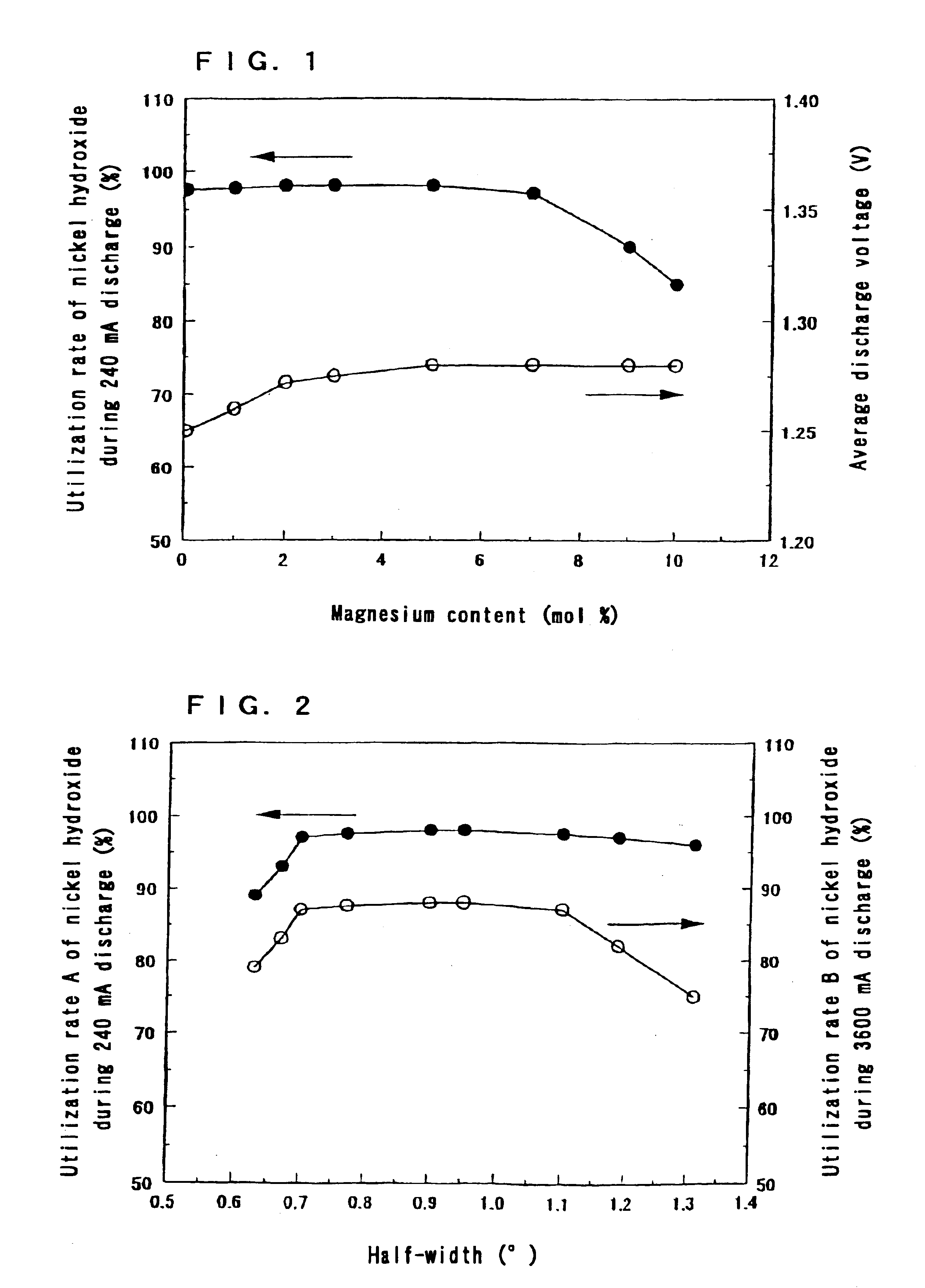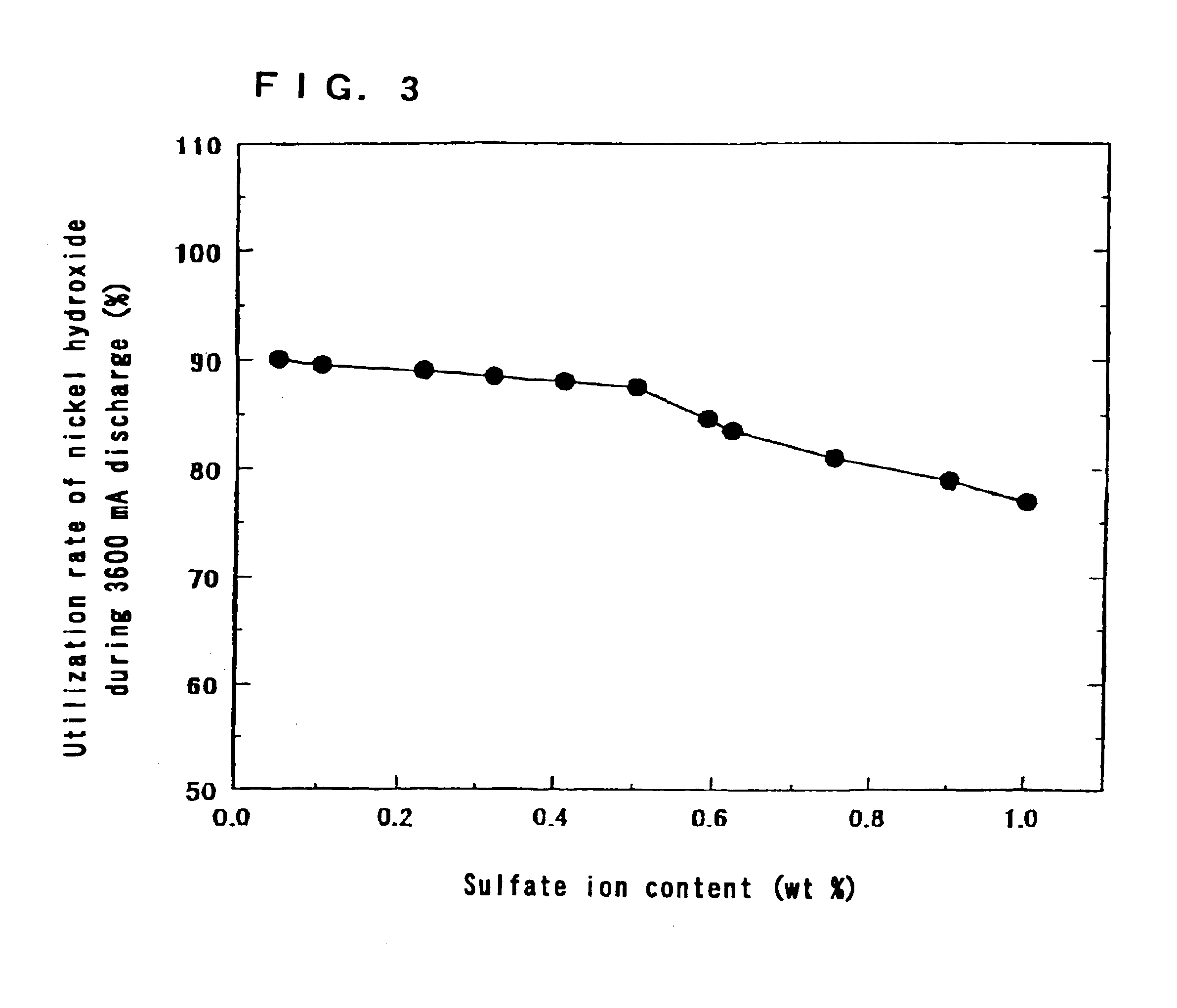Positive electrode active material for alkaline storage batteries, and positive electrode and alkaline storage battery using the same
- Summary
- Abstract
- Description
- Claims
- Application Information
AI Technical Summary
Benefits of technology
Problems solved by technology
Method used
Image
Examples
example 2
The same operation as in Step 1 of Example 1 was carried out except that the ratio of the amount of magnesium ions to the total amount of nickel ions and magnesium ions in the aqueous solution containing nickel sulfate and magnesium sulfate was made 5 mol % and the concentration of the aqueous sodium hydroxide solution was made 4.2 to 6 mol / liter. The crystallinity of the hydroxide can be changed by the concentration of the aqueous sodium hydroxide solution. Since the concentration of the aqueous sodium hydroxide solution was varied, the pH value in a reaction vessel in a steady state was between 11 and 12.5.
Thereafter, the same operation as in Example 1 was carried out so as to obtain nickel hydroxide powders in the state of a solid solution with an average particle size of 10 .mu.m.
The obtained nickel hydroxide powders were analyzed, and the following results were obtained.
The ratios of the amount of magnesium to the total amount of nickel and magnesium in the nickel hydroxides we...
example 3
The same operation as in Step 1 of Example 1 was carried out except that the ratio of the amount of magnesium ions to the total amount of nickel ions and magnesium ions in the aqueous solution containing nickel sulfate and magnesium sulfate was made 5 mol %.
Moreover, the same operation as in Step 2 of Example 1 was carried out except that the time and the number of repetition of the alkali treatment were changed, so that nickel hydroxide powders in the state of a solid solution with an average particle size of 10 .mu.m were obtained.
The obtained nickel hydroxide powders were analyzed, and the following results were obtained.
The ratios of the amount of magnesium to the total amount of nickel and magnesium in the nickel hydroxides were 5 mol %.
The sulfate ion contents in the nickel hydroxides were 0.05 to 1.0 wt %.
The powder X-ray diffraction patterns of the nickel hydroxides by CuK.alpha. radiation all exhibited a .beta.-Ni(OH).sub.2 type single phase pattern.
The half-widths of a pea...
example 4
The same operation as in Step 1 of Example 1 was carried out except that the ratio of the amount of magnesium ions to the total amount of nickel ions and magnesium ions in the aqueous solution containing nickel sulfate and magnesium sulfate was made 5 mol % and the temperature in the reaction apparatus was changed to 20 to 70.degree. C. It is possible to change the orientation of the crystals of hydroxide by changing the temperature in the reaction apparatus.
Thereafter, the same operation as in Example 1 was carried out so as to obtain nickel hydroxide powders in the state of a solid solution with an average particle size of 10 .mu.m.
The obtained nickel hydroxide powders were analyzed, and the following results were obtained.
The ratios of the amount of magnesium to the total amount of nickel and magnesium in the nickel hydroxides were 5 mol %.
The sulfate ion contents in the nickel hydroxides were 0.3.+-.0.01 wt %.
The powder X-ray diffraction patterns of the nickel hydroxides by CuK....
PUM
 Login to View More
Login to View More Abstract
Description
Claims
Application Information
 Login to View More
Login to View More - R&D
- Intellectual Property
- Life Sciences
- Materials
- Tech Scout
- Unparalleled Data Quality
- Higher Quality Content
- 60% Fewer Hallucinations
Browse by: Latest US Patents, China's latest patents, Technical Efficacy Thesaurus, Application Domain, Technology Topic, Popular Technical Reports.
© 2025 PatSnap. All rights reserved.Legal|Privacy policy|Modern Slavery Act Transparency Statement|Sitemap|About US| Contact US: help@patsnap.com



